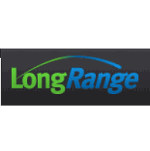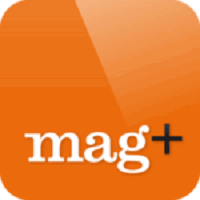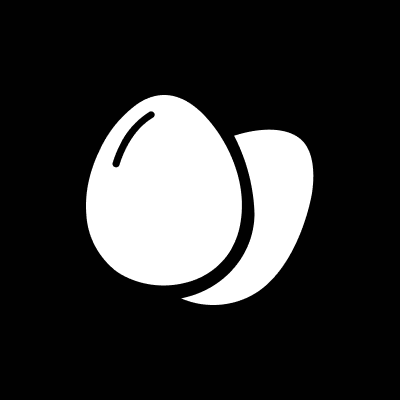Description

LongRange

Pega 7 App
Comprehensive Overview: LongRange vs Pega 7 App
LongRange and Pega 7 are distinct applications, each serving specific functions and targeting different markets. Here's a comprehensive overview of both:
LongRange
a) Primary Functions and Target Markets:
- Primary Functions: LongRange is a native app-building platform that enables organizations to create cross-platform mobile applications rapidly. It leverages existing IBM i and RPG systems, allowing developers to build and deploy mobile apps that integrate seamlessly with these legacy systems.
- Target Markets: It primarily targets businesses and organizations that rely heavily on IBM i systems and are looking to extend their existing infrastructure to mobile platforms. This includes industries such as manufacturing, distribution, and finance, where IBM i systems are prevalent.
b) Market Share and User Base:
- LongRange caters to a niche but critical market segment focused on legacy system modernization. Its market share is smaller compared to large-scale mobile app development platforms. As a specialized tool, its user base is concentrated among IBM i-dependent enterprises seeking native mobile capabilities without fully overhauling their existing systems.
c) Key Differentiating Factors:
- Integration with IBM i: LongRange’s seamless integration with IBM i and RPG systems makes it unique. It allows enterprises to leverage existing code and logic for mobile app development, reducing time and cost.
- Ease of Use: Designed for developers familiar with RPG, it offers an easier transition into mobile app development without needing to learn new coding languages.
Pega 7
a) Primary Functions and Target Markets:
- Primary Functions: Pega 7 is a Business Process Management (BPM) and customer relationship management (CRM) platform focused on enabling organizations to automate complex processes across the enterprise. It offers tools for application development, case management, and decision automation.
- Target Markets: Pega 7 is targeted towards large enterprises across various sectors, including financial services, healthcare, telecommunications, and government agencies that require robust BPM and CRM capabilities.
b) Market Share and User Base:
- Pega 7 holds a significant market share in the BPM and CRM space, especially among organizations looking for high levels of configurability and scalability in their business processes. Its user base consists of enterprise-level organizations seeking comprehensive solutions for complex process automation.
c) Key Differentiating Factors:
- Model-Driven Approach: Pega uses a visual, model-driven approach to application development that allows for rapid prototyping and agile delivery. This distinguishes it from code-centric development platforms.
- Real-Time Decisioning: It offers real-time decision management and analytics, enhancing the ability to tailor customer interactions and automate decisions based on analytics.
- Unified Platform: Pega 7 provides a unified platform for CRM, BPM, and case management, enabling seamless integration and interaction across various business processes.
Comparative Summary
- Target Markets: LongRange caters to IBM i-dependent businesses needing mobile app solutions, while Pega 7 serves a broader enterprise audience looking for BPM and CRM capabilities.
- Primary Functions: LongRange focuses on mobile app development within legacy systems, whereas Pega 7 offers comprehensive process automation and CRM functionalities.
- Integration: The key differentiator for LongRange is its tight integration with IBM i systems, while Pega excels in providing a unified model-driven solution for enterprise process management.
Overall, while both LongRange and Pega 7 offer valuable solutions in their niche domains, they appeal to different segments of the software market, with LongRange addressing mobile integration for IBM systems and Pega 7 providing enterprise-grade BPM and CRM capabilities.
Contact Info

Year founded :
2011
Not Available
Not Available
Cyprus
http://www.linkedin.com/company/longrange-ltd-

Year founded :
Not Available
Not Available
Not Available
Not Available
Not Available
Feature Similarity Breakdown: LongRange, Pega 7 App
To provide a feature similarity breakdown for LongRange and Pega 7 App, we can examine their core functionalities and additional distinctive characteristics. Note that LongRange is a mobile development platform that focuses on developing native mobile applications using IBM i capabilities, while Pega 7 is a business process management (BPM) and customer relationship management (CRM) suite known for its low-code development environment.
a) Core Features in Common:
-
Development Framework:
- Both LongRange and Pega 7 offer robust development environments designed to streamline the application development process. LongRange facilitates native mobile applications, while Pega 7 provides a comprehensive suite for creating enterprise-grade applications.
-
Integration Capabilities:
- Both platforms support extensive integration with other systems. LongRange can connect with IBM i systems, while Pega 7 offers APIs and connectors to integrate with various third-party systems and data sources.
-
Scalability:
- Designed to support enterprise-level applications, both platforms emphasize scalability to meet growing business needs.
-
Security:
- Ensuring data and application security is a priority in both LongRange and Pega 7, with built-in features to protect sensitive information.
b) User Interfaces Comparison:
-
LongRange UI:
- LongRange focuses on creating native mobile interfaces. Its UI design caters to mobile devices, emphasizing responsiveness and leveraging device-specific capabilities.
- It provides a user-friendly environment tailored for those familiar with IBM i green-screen applications, enabling them to transition these applications to a mobile-friendly format.
-
Pega 7 UI:
- Pega 7's user interface is web-based and highly configurable, utilizing a modern, low-code, drag-and-drop design approach. It allows for the rapid development of user interfaces that are responsive and adaptable to various screen sizes.
- It emphasizes business-friendly design templates and provides extensive customization for different business process management tasks.
c) Unique Features:
LongRange:
- Native Mobile Functionality:
- LongRange is specifically designed to create native mobile applications. It offers direct access to mobile device features such as GPS, camera, and native notifications, which are not inherently available in web-based platforms like Pega 7.
Pega 7:
-
Business Process Automation:
- Pega 7 excels in its ability to automate complex business processes using its rules-driven architecture. This feature stands out by enabling organizations to design, execute, monitor, and optimize their operations seamlessly.
-
AI and Predictive Analytics:
- Pega 7 incorporates AI and machine learning capabilities to drive predictive analytics and decision-making processes, which adds a rich layer of intelligence to enterprise applications.
-
Customer Engagement:
- With built-in features for robust CRM, Pega 7 is designed to enhance customer engagement across various channels, a focus less emphasized in LongRange.
In summary, both LongRange and Pega 7 come with robust development frameworks, integration capabilities, scalability, and security features. The main differences lie in their target use cases and user interfaces—LongRange as a mobile-first, native application platform, and Pega 7 as a versatile, low-code BPM and CRM tool with advanced process automation and customer engagement capabilities.
Features

Not Available

Not Available
Best Fit Use Cases: LongRange, Pega 7 App
LongRange and Pega 7 App are both platforms that cater to different needs when it comes to building applications, particularly in the area of mobile and enterprise software solutions. Let's break down where each of these might be best applied:
LongRange
a) Types of businesses or projects:
-
Enterprise Mobility: LongRange is an ideal choice for businesses that need to extend their existing IBM i (AS/400) applications to mobile devices. It leverages existing infrastructure and code, thus making it a cost-effective choice for businesses deeply integrated with IBM systems.
-
Warehouse and Logistics: Companies in logistics or warehousing industries that rely heavily on IBM i systems can benefit from LongRange to provide field workers with mobile access to inventory systems, shipment tracking, and other logistics operations without needing to redevelop core backend applications.
-
Manufacturing and Supply Chain: Those in manufacturing can use LongRange to provide mobile access to process controls and supply chain operations, directly tapping into already established IBM i environments.
d) Industry verticals or company sizes:
- Small to Medium Enterprises (SMEs): Particularly those heavily invested in IBM i infrastructure and seeking mobile solutions without investing in a full revamp or migration to modern platforms.
- Industries with Legacy Systems: Specifically those using IBM i systems, such as finance, healthcare, supply chain, manufacturing, and logistics.
Pega 7 App
b) Preferred scenarios:
-
Customer Relationship Management (CRM): Ideal for businesses looking to develop robust CRM applications with advanced case management capabilities, allowing them to manage complex customer interactions efficiently.
-
Business Process Management (BPM): Best for companies prioritizing streamlined process automation, offering a no-code or low-code environment to rapidly develop and deploy enterprise applications with built-in accountability and transparency.
-
Enterprise Application Development: Suitable for organizations seeking to build scalable enterprise applications, particularly those that require integration across different systems and streamlined workflow capabilities.
-
Financial Services and Insurance: Scenarios that demand robust risk management, compliance tracking, and adaptive customer engagement solutions would find Pega 7 advantageous.
d) Industry verticals or company sizes:
- Large Enterprises: Especially those needing complex process workflows, regulatory compliance, and customer-centric applications.
- Varied Industries: Such as finance, insurance, healthcare, telecommunications, and government, where there's a demand for robust process automation and customer engagement applications.
- Cross-Industry Application: Due to its versatility and comprehensive integration capabilities, Pega 7 can cater to a multitude of different industry needs.
Both LongRange and Pega 7 have their unique strengths and are suitable for specific organizational requirements. While LongRange facilitates mobile transformation of legacy IBM applications, Pega 7 offers extensive capabilities for dynamic process management and sophisticated enterprise application building.
Pricing

Pricing Not Available

Pricing Not Available
Metrics History
Metrics History
Comparing undefined across companies
Conclusion & Final Verdict: LongRange vs Pega 7 App
Conclusion and Final Verdict for LongRange vs Pega 7 App
The decision between LongRange and Pega 7 App hinges on various factors such as business needs, use case scenarios, and technical requirements. Both platforms have their unique strengths and weaknesses, which can cater to different organizational goals.
a) Which Product Offers the Best Overall Value?
Pega 7 App generally offers the best overall value for businesses looking for a robust, flexible, and scalable platform, especially if the organization needs an enterprise-grade solution with extensive process automation, case management capabilities, and an emphasis on customer engagement. Its comprehensive suite of features and strong support system provides a high return on investment, making it an excellent choice for larger enterprises with complex requirements.
b) Pros and Cons of Choosing Each Product
LongRange:
-
Pros:
- Specializes in mobile application development with a simplified approach, which can be straightforward for developers familiar with RPG or COBOL.
- Provides rapid development and deployment of mobile applications, significantly cutting down on time-to-market.
- Ideal for organizations that need to extend existing legacy systems to mobile platforms without extensive redevelopment.
-
Cons:
- Limited in functionality compared to more comprehensive platforms like Pega 7, particularly in areas such as process automation and integrated solutions.
- May require additional third-party tools or software to meet broader business requirements beyond mobile app development.
- Less suited for organizations in need of a full-scale digital transformation.
Pega 7 App:
-
Pros:
- Offers a rich set of features for business process management (BPM), case management, CRM applications, and more.
- Highly customizable and scalable to fit the needs of various industries and business sizes.
- Continuous innovation and updates from Pega, ensuring that it remains at the forefront of technology advancements.
- Strong community and professional support network for troubleshooting and implementation guidance.
-
Cons:
- Can be complex to implement and manage, requiring skilled personnel or dedicated resources.
- Higher initial setup and ongoing costs, which may not be feasible for smaller businesses or those with limited budgets.
- Steeper learning curve, particularly for teams without prior experience in Pega's ecosystem.
c) Specific Recommendations for Users
-
For Small to Mid-sized Businesses:
- Consider LongRange if your primary focus is mobile application development with rapid deployment needs, especially if you have existing legacy systems. It’s a cost-effective solution with minimal complexity.
- Opt for Pega 7 if you envision growing and expanding your digital capabilities. While the investment is higher, it will pay off through its scalable and comprehensive features.
-
For Large Enterprises:
- Pega 7 should be the go-to choice as it provides a holistic approach to process optimization, customer relationship management, and enterprise-level features. It supports digital transformation initiatives with its extensive capabilities.
-
General Recommendation:
- Assess your current technical environment, business processes, and long-term objectives. Consider a pilot project or a proof of concept to evaluate how each solution integrates into your current operations before making a substantial commitment.
- Engage with technical consultants or service providers to gain insights into the customization potential and alignment with your business goals.
In summary, the decision between LongRange and Pega 7 App should be guided by the specific needs and scale of the business. LongRange shines in niche mobile application scenarios, while Pega 7 is ideal for organizations seeking a comprehensive digital transformation platform.
Add to compare
Add similar companies



